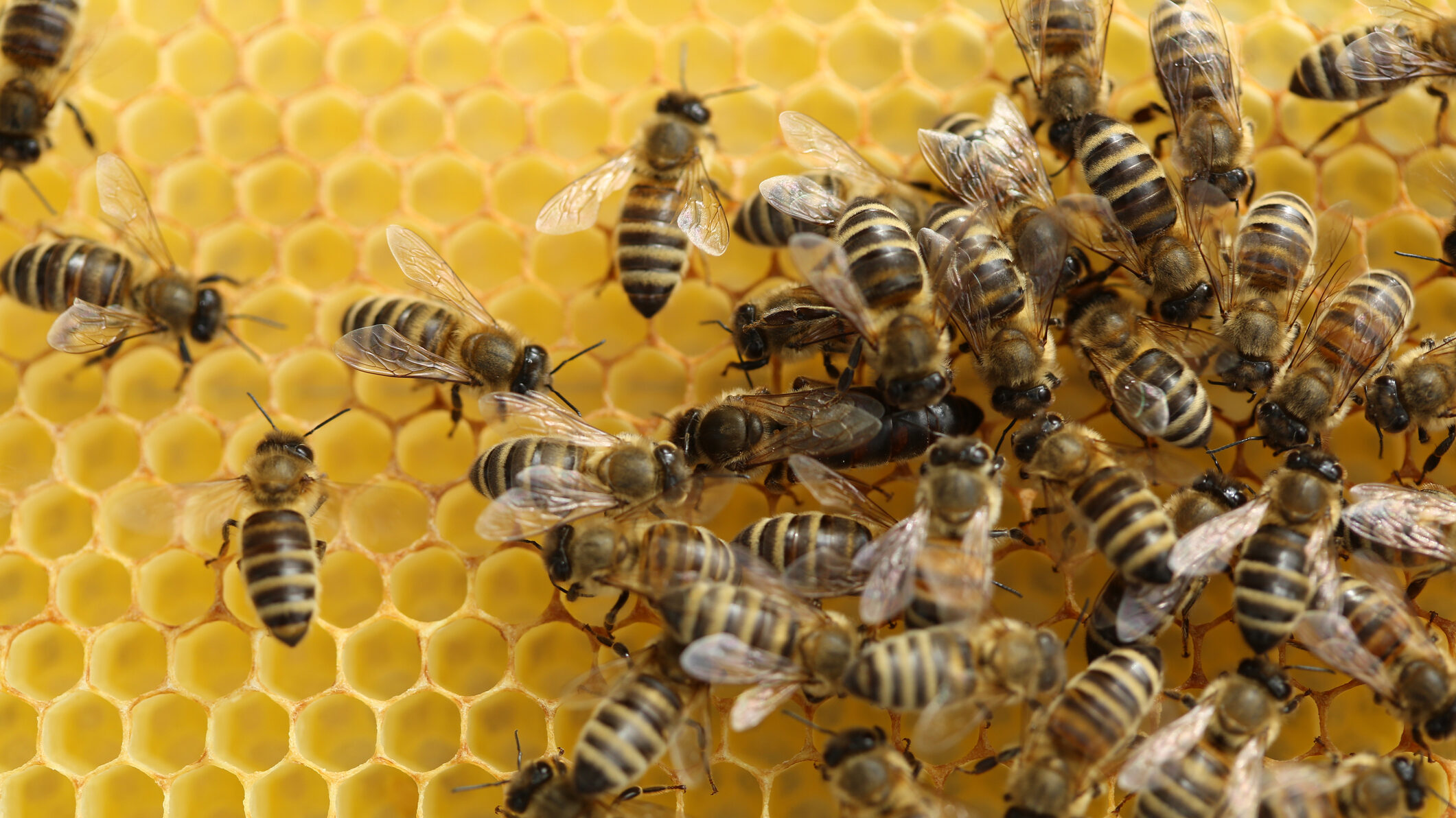
Honey bees are fascinating creatures with some pretty amazing traits and abilities! Here are some interesting facts about them:
Incredible Navigation Skills
Honey bees use the sun as a compass and can even recognize landmarks. They communicate the location of flowers to other bees in the hive through a “waggle dance,” which indicates the direction and distance to the food source.
Social Structure
A honey bee colony consists of three types of bees: the queen, workers, and drones. The queen’s primary role is to lay eggs, while worker bees perform tasks like foraging, cleaning, and caring for the queen and brood. Drones, which are male bees, have the sole purpose of mating with a queen.
Amazing Flight
Honey bees can fly at speeds of up to 15 miles per hour and can visit 50 to 100 flowers in a single trip. They beat their wings approximately 200 times per second, creating the characteristic buzzing sound.
Honey Production
To produce just one pound of honey, bees must visit approximately 2 million flowers and travel over 55,000 miles. It takes about 12 bees working their entire lives to produce just one teaspoon of honey.
Complex Communication
Honey bees use a sophisticated system of communication. The waggle dance, mentioned earlier, is a form of symbolic language that conveys information about the distance, direction, and quality of the food source.
Temperature Regulation
Honey bees are capable of regulating the temperature inside their hive. They use their bodies to generate heat when it’s cold and fan their wings to cool down the hive when it’s too hot, maintaining an optimal temperature of about 95°F (35°C).
Variety of Honey
Honey varies greatly in flavor, color, and texture depending on the flowers the bees visit. For instance, clover honey is light and mild, while buckwheat honey is dark and has a strong flavor.
Declining Populations
Honey bee populations are under threat due to factors like habitat loss, pesticides, and disease. Their decline poses a significant risk to pollination and global food supply, as they are crucial for the pollination of many crops. They have recovered in recent years though!
Here are some lesser-known facts about honey bees that might surprise you:
Cognitive Abilities
Honey bees have impressive memory and learning abilities. They can remember the colors, shapes, and patterns of flowers, as well as the locations of those flowers. They can even recognize human faces and remember them for several days. Our honey bees in our back yard know we are the ones that feed them in winter and are super friendly with us!
Specialized Body Parts: Honey bees have specialized body parts for various tasks. For example, their legs have pollen baskets (corbiculae) that help them carry pollen back to the hive. Their proboscis, a long, tube-like tongue, is used to suck nectar from flowers.
Bee “Venom” Benefits
Honey bee venom contains compounds like melittin and apamin, which have been studied for their potential therapeutic benefits. Some research suggests that bee venom might have anti-inflammatory and pain-relieving properties and could be useful in treating conditions like arthritis.
Queen Bee’s Pheromones
The queen bee produces a unique blend of pheromones known as the “queen substance” or “queen pheromone.” These pheromones not only help maintain the social structure of the hive by suppressing the development of other queens but also help in coordinating activities within the colony.
Hygienic Behavior
Honey bees exhibit “hygienic behavior” where they identify and remove diseased or parasitized brood (larvae and pupae) from the hive. This helps reduce the spread of diseases and parasites and maintains the overall health of the colony.
Bee Dancing Variants
In addition to the waggle dance, honey bees also perform a “round dance.” The round dance is used to indicate that food sources are very close to the hive. It’s a more straightforward communication method compared to the waggle dance, which is used for longer distances.
Pollination Preferences
Honey bees have preferences for certain types of flowers. They are particularly attracted to flowers with ultraviolet markings, which are invisible to humans but help guide bees to the nectar. Some flowers even have specific shapes that are adapted to bee pollination.
Bee Sleep Patterns
Honey bees have distinct sleep patterns. They do not sleep in the same way humans do but enter periods of rest where their body functions slow down. During these rest periods, their metabolic rate decreases, and they become less responsive to external stimuli.
These facts reveal just how intricate and sophisticated honey bee biology and behavior are, highlighting their crucial role in our ecosystems and the interactions within their colonies. Always remember that regular ol’ honey bees are not aggressive and won’t sting unless provoked!
